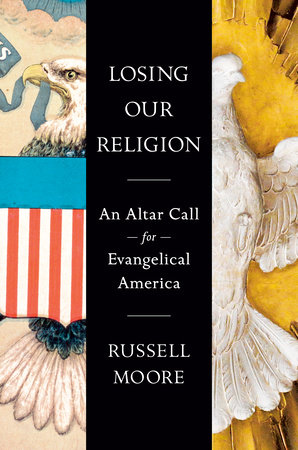American pop culture is accustomed to celebrities “reinventing”themselves. After all, Madonna has moved through more incarnations in one career than Shirley Maclaine has had in seven lifetimes. Michael Jackson has changed not only musical styles, but also his face, his race, and his gender identity a few times as well. But what does one do when Bugs Bunny reinvents himself?
Warner Brothers is on the receiving end of protests, as Looney Tunes fans are horrified by the company’s plan to transform Bugs Bunny, Daffy Duck, and their friends into a grim, dark, futuristic team of crime-fighters. Yes, the Looney Tunes are now “Loonatics”—and they are edgy, hip, and a little frightening. In fact, actor Jimmy Kimmel pronounced to USA Today that the innocence was so lost from the WB characters that Tweety Bird now “looks like a hooker from space.” Apparently, Warner Brothers wants to update Bugs from “What’s Up, Doc” to “Wassup, Dawg.”
So what is up here?
Well, first of all, Bugs Bunny was never just a cartoon. Instead, he was perhaps the prototypical effort at a “hip” cartoon that could reflect the“edginess” of contemporary American society. Journalist David Leland, in his book Hip: The History, demonstrates that the Bugs Bunny character “set the principled rebellion of Emerson and Thoreau in a landscape of outrageous violence, shaped by a theology of humor and payback.” Leland writes that Bugs “was unmistakably a creature of the modern city. He was scrappy, wise, ethnic. The accent and the action around him reflected the jitters and jump of an urbanizing society.”
Even beyond the rabbit, Leland’s thesis is right. Contrast Warner Brothers with the sappy sentimentality of much of the Disney material. Looney Tunes has always had a slight “violent” side. Think about poor Wile E. Coyote falling off of cliffs, and having rockets explode in his face, when all he really wanted to do was to catch that roadrunner with the latest gadget from Acme Corporation.
The problem for Bugs Bunny and Company is that, as Leland notes about everything from the Roaring Twenties to the ‘60s counter-culture, everything hip ultimately loses its “edge” and becomes mainstream. That’s why Beatles songs now sell shoes on the radio, and the Grateful Dead are played instrumentally as elevator background music. If Bugs Bunny is going to reclaim his edginess, Warner Brothers executives seem to reason, he has to get in touch with his dark side.
It seems to me that the “Loonatics” phenomenon is not all that far removed from the “emergent church” fad sweeping American Christianity at the moment. Many good critiques of the “generous orthodoxy” of Brian McLaren have been offered—noting everything from the movement’s embrace of a faulty view of truth to its flirtation with understandings of salvation that reject the necessity of explicit faith in Christ. But even beyond the specific doctrinal crises in the emergent movement, there is the sad fact that this really isn’t all that new.
That’s because the problem is not simply with the postmodern fuzziness of Brian McLaren and his devotees. The problem instead is that American evangelicalism long ago sold out to cultural accommodation to the consumerist, therapeutic ethos of contemporary American society. Now that side of evangelicalism is as “lame” in the eyes of the culture as a Looney Tunes cartoon from the 1960s. And so, evangelicalism “reinvents” itself—in the image of a brooding, angst-ridden twenty-something coffeehouse culture.
Of course, there is more than one expression of the “emergent” phenomenon—and not all of it is bad. The call to community and authenticity in life together are as old as the New Testament. Some of the worship practices that are emerging from the emergent church are an improvement on the canned infotainment of standard evangelical fare. But within the McLaren wing of the “emergent” church, the simultaneous rejection of propositional truth and Christocentric revelation—coupled with a suspicion of authority in general—result in a Christianity that just happens to coincide with the cynical milieu of reality television, NPR-style religious pluralism, and the postmodern fads of the local university English department.
That may be hip, but it certainly isn’t counter-cultural.
The “Loonatics” won’t last long. USA Today reports that already the “re-imagined” characters are causing a backlash reminiscent of “New Coke.” But the old Bugs Bunny will never be as “hip” as he once was either. After all, it takes more than a Bronx accent to be “edgy” in 21st century America.
And if American Christianity seeks to move beyond being “hip” to real relevance, we must recognize that relevance comes with something more than black turtlenecks and goatees, just as it needed more than rhinestone leisure suits in generations past. Real relevance comes with a message that is so alien and so arresting that even the pagan culture mavens stop to ask, “What does this babbler wish to say?” (Acts 17:18)
Cross-cultural communication is a gospel mandate. And, yes, that means that a church in Seattle may look different from a church in Nashville or in Kievor in Beijing. But this truth doesn’t mean that we need to toss aside the faith once for all delivered to the saints for spirits of the age that promise us community and authenticity without truth.
And we desperately need to realize that cultural awareness, demographic savvy,and technological agility are never enough, by themselves, to transform reality.Just ask Wile E. Coyote—while you still can.





